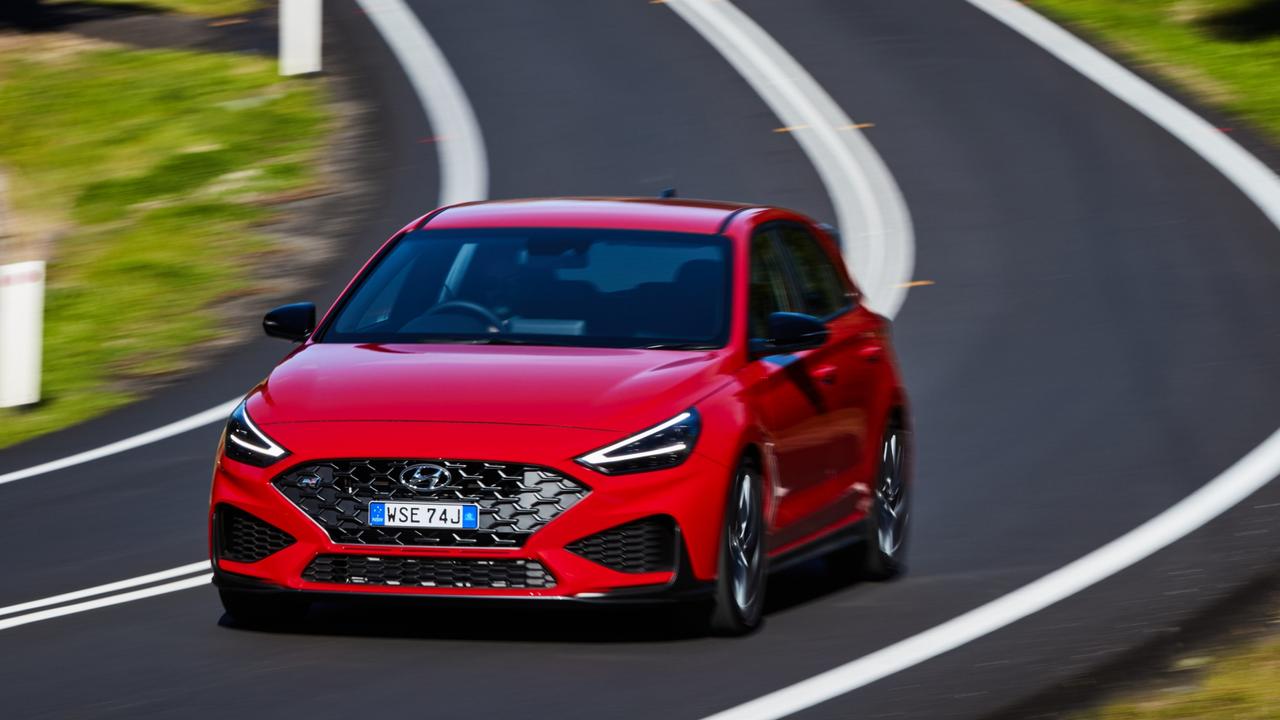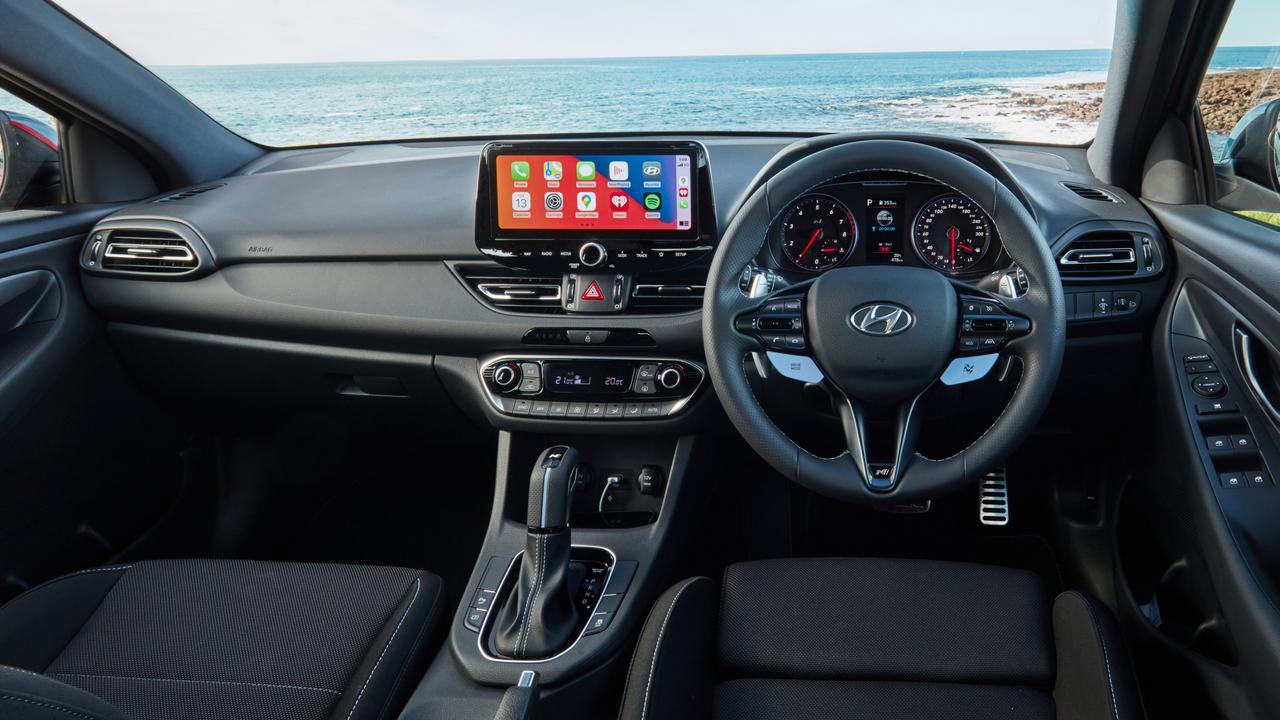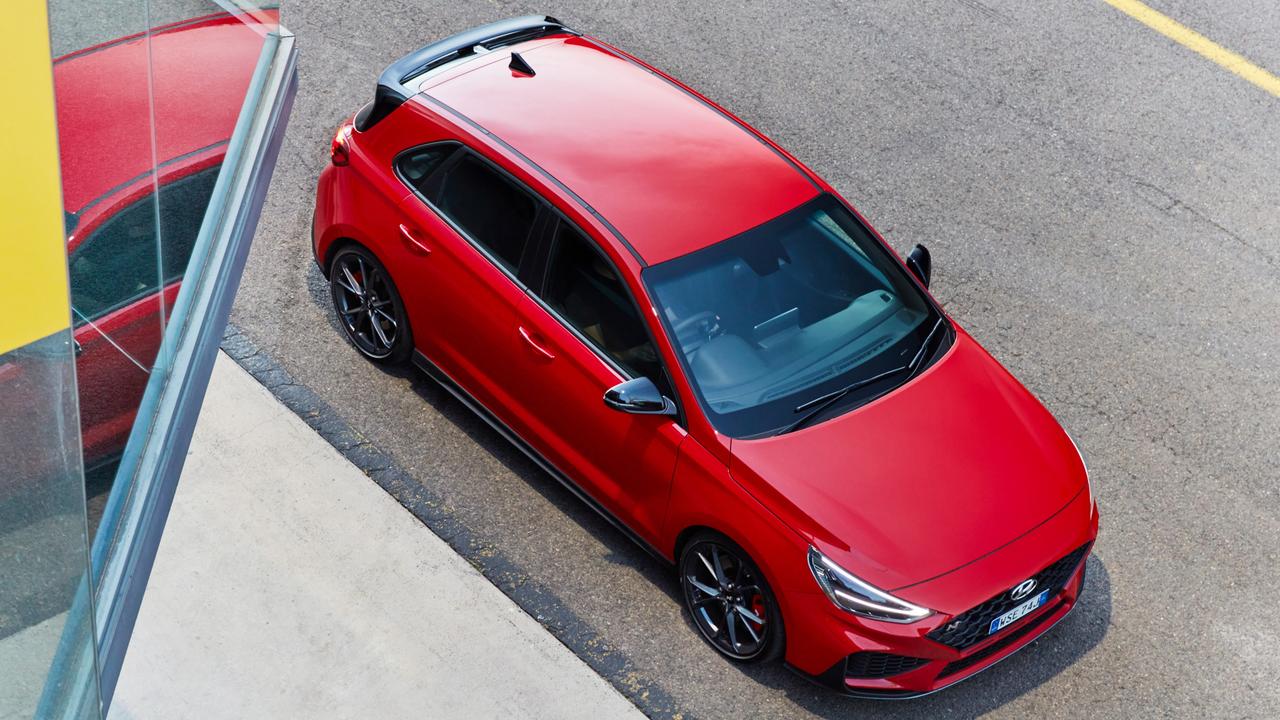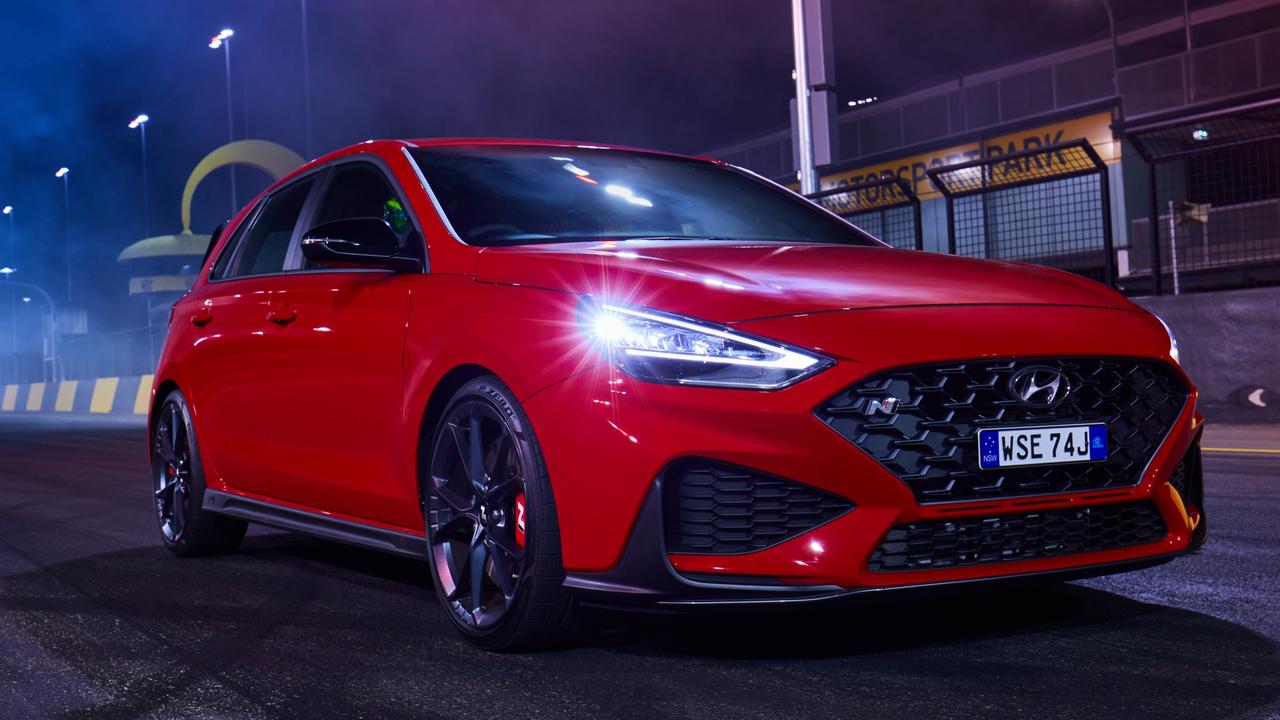Road test review of Hyundai i30N with new automatic transmission
Lauded for its hardcore performance abilities since launch, the Hyundai i30N hot hatch has broadened its appeal.

Business
Don't miss out on the headlines from Business. Followed categories will be added to My News.
When the i30N arrived it was a watershed moment for Hyundai.
Having successfully mastered orthodox family cars and SUVs, this was the marque’s first foray into the performance genre. The result was spectacular.
Named News Corp Car of the Year in 2018, the accolade recognised an outstanding product and the bold steps the brand had undertaken.
The i30N paved the way for an enhanced performance family, and there are now sportback and sedan versions as well as the
new i20N.
Recently enhanced for the first time since its launch, the i30N is now available with an automatic transmission, which is expected to open the door to a greater audience.

FIRST IMPRESSIONS
KEL: With the body kit and nice alloys, I think it looks as good as the Europeans.
GRANT: There’s an element of restrained elegance. It’s modest athleticism, but the big “N” brake calipers behind the new alloys indicate the ability that hides within.
KEL: This is the 2021 model, but it looks and feels similar to the previous variant.
GRANT: There have been performance improvements all-round, it’s faster (courtesy of an additional 4kW and 39Nm) and lighter on the scales through a range of lightweight materials, but the big addition is that self-shifting box.
KEL: Manuals are still fun to drive but I must say autos are my preference when dealing
with traffic.
GRANT: While the manual is typically my preference, in this case the eight-speed auto is quicker in the 0-100km/h sprint and more efficient.
KEL: I remember the i30N was always pretty good value. Have the prices risen much with the automatic option?
GRANT: You’re looking at a $3000 premium. Overall prices have climbed about $5000. Drive-away for the base manual i30N is about $48,680, but we’re in the Premium variant, which is more than $56K in traffic.
KEL: That’s still a big investment for a small hatchback.
GRANT: But how many hatches can you take to the track and have a whole heap of fun? Hyundai’s warranty even covers track days.

THE LIVING SPACE
KEL: Basic and simple to navigate, the cabin lacks some excitement.
GRANT: All the exhilaration you need comes from the driving. Among the new additions are a 10.25-inch primary screen, wireless phone charging pad and push-button start. Premium models also get the special lighter bucket seats.
KEL: I appreciate the simplicity of operations with easy access to the aircon controls and the cupholders in the console as well as bottle holders in the doors.
GRANT: Apple CarPlay and Android Auto are standard, yet the Hyundai infotainment system is straightforward to navigate.
KEL: The USB access point in front of the shifter is good, along with the space for
your phone.
GRANT: Some hard plastics are used throughout the cabin and some features feel dated given how fast things are moving in the tech realm. The driver has an analogue speedo and tacho, but a configurable digital display that features a range of trip and car information sits between the two.

THE COMMUTE
KEL: Those driving modes offer distinct personality changes. Around town I found the i30N responsive although nothing too crazy. Then I used the blue buttons on the steering wheel.
GRANT: Choose Sport or the N modes and it goes to the next level. The exhaust soundtrack changes to loud and the fun begins.
KEL: Plant your foot and it really gets away from the lights quickly.
GRANT: It’s not electric vehicle fast from standstill, although combined with the engine and exhaust sound it creates a lovely sense of
racing theatre.
KEL: Bumps and lumps tend to reverberate through the cabin.
GRANT: It’s been honed for performance, so that comes with the territory.
KEL: Traffic is one of my big bugbears so it’s disappointing that radar cruise control isn’t included.
GRANT: Hyundai has the functionality slated in the future, as the just-released sedan boasts that feature, while the hatch also misses out on a head-up display which is useful for keeping an eye on your speed – vital in the i30N.

THE SHOPPING
KEL: Parking sensors front and back are great for navigating the concrete carpark pillars, and while the rear camera view is great I really like the complete aerial perspective.
GRANT: Another upgrade for the latest model is blind spot and rear cross traffic warning, the latter is awesome when reversing out in those carparks to advise whether vehicles are approaching quickly and your vision is impeded. The turning circle is also large for a small hatch – another performance car tradeoff.
KEL: The boot space was fine for groceries, but what’s that bar that runs across near the seats?
GRANT: That’s the stiffening bar to aid cornering. It can be intrusive when loading awkward-size items, as the rear seats fold 60-40.

THE SUNDAY RUN
KEL: The way it feels and sits on the road, I found the driving feeling similar to BMW.
GRANT: That’s intriguing, as one of the pivotal engineers behind the i30N was Albert Biermann – who came across to Hyundai from BMW’s sporty M division.
KEL: It was especially evident through the steering. Twisty terrain is where it does its
best work.
GRANT: You can forgive some of the tyre noise generated by the Pirelli P-Zero rubber when you find the bends. Poise and confidence personified, it brakes, turns and accelerates with finesse.
KEL: When choosing the performance modes it really shifts quickly.
GRANT: No matter how good you are at swapping cogs, the new auto is better. With steering wheel paddle shifters you can trim through the gears like Louis Hamilton. On the steering wheel there is also “N Grin Shift mode”, which accesses maximum engine power for 20 seconds.
KEL: That starts to get a little technical for my liking. I just want to pick a mode and drive.
GRANT: And that’s among the i30N benefits. It has a Power Shift function which keeps the revs pinned between gear changes. So collectively, the technical gizmos make your performance better ... but the track is where it’s best to explore full performance abilities.

THE FAMILY
KEL: Despite the firmer ride, I didn’t mind the i30N for daily duties. Our two growing boys had good head and leg room in the back.
GRANT: No rear vents though, or USB points.
KEL: Given the performance focus, what are the running costs like?
GRANT: Using premium unleaded, our test saw the average consumption climb to above nine litres for every 100km. When buying there is an option to bundle servicing and for five years or 50,000km it’s $1675. Maintenance intervals are short at every 10,000km.

THE VERDICT
KEL: Really loveable, the athleticism combined with daily driveability is appealing. The performance is probably more than what I’d need as I have no interest in going to a track.
GRANT: Those who like the racy looks but not the ability would be happy with the N Line. But for drivers, they will love the i30N. The new auto is lightning fast and responds to throttle inputs and remains one of the most engaging cars on the market. Great just got better.
Originally published as Road test review of Hyundai i30N with new automatic transmission









